SUSSING OUT NEW TERRITORY
By Pete ‘PJ’ Jones
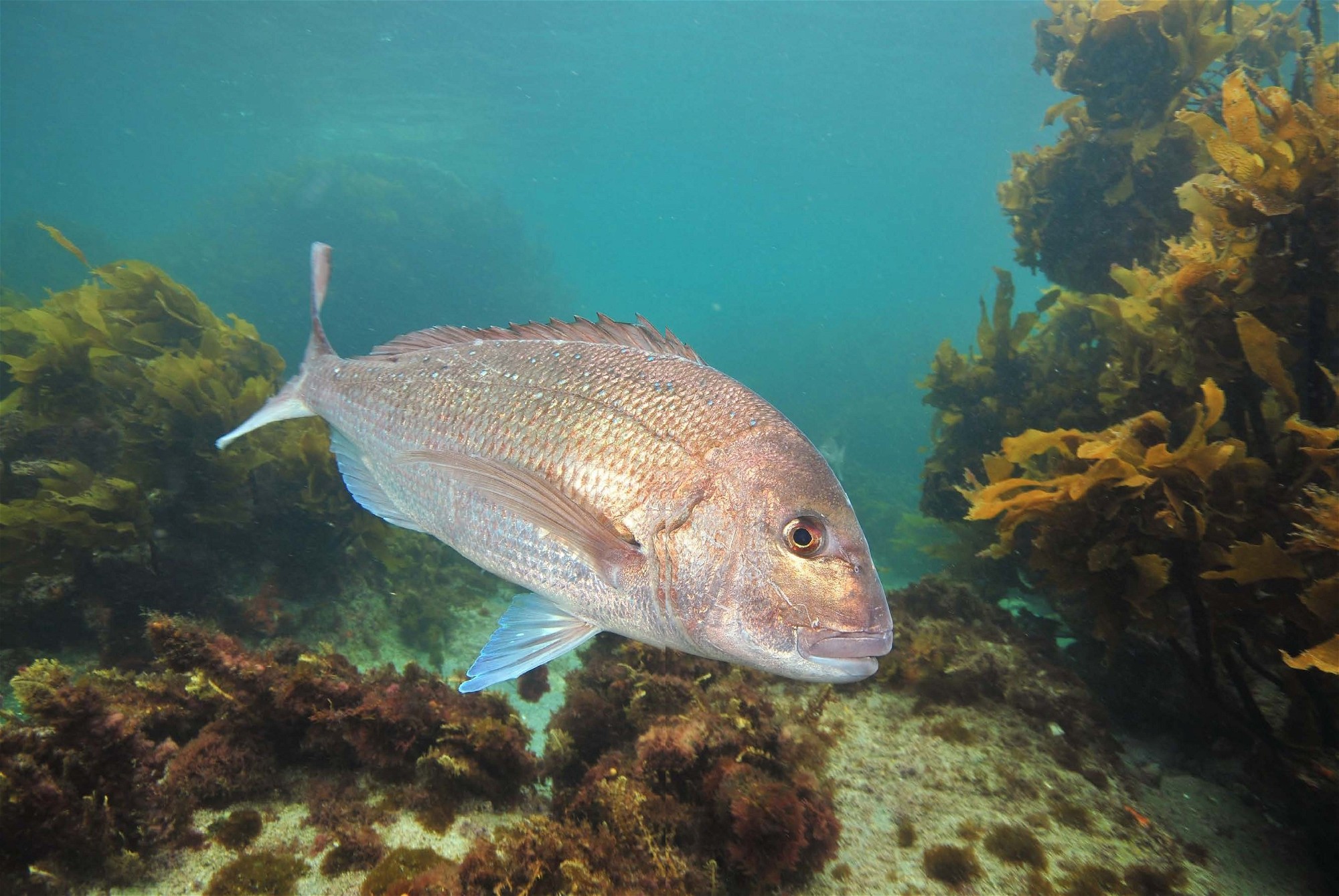
Structure aggregates food and also provides cover for predatory fish such as snapper.
Our mate Laurie runs a very interesting fishing contest from Coromandel each year. It’s a two-day, softbaiting-only, kayak-fishingonly, three-species contest.
Overall prizewinning depends on the longest combined length of your best one of each of snapper, kahawai, and trevally. If you miss out on even one of the species, you’re unlikely to be in the first 10. And last year, a record 15% of the entrants managed to measure one of each of the species. Usually, it’s not that many.
But for me, the best aspect of it is that Laurie changes the venue now and then for the first day’s mass start. It’s been at Port Jackson, Port Charles, and this year at Opito Bay. I’d never fished from either Port Charles or Opito Bay before launching during these contests. And I don’t have either a sounder or a chartplotter aboard my kayak.
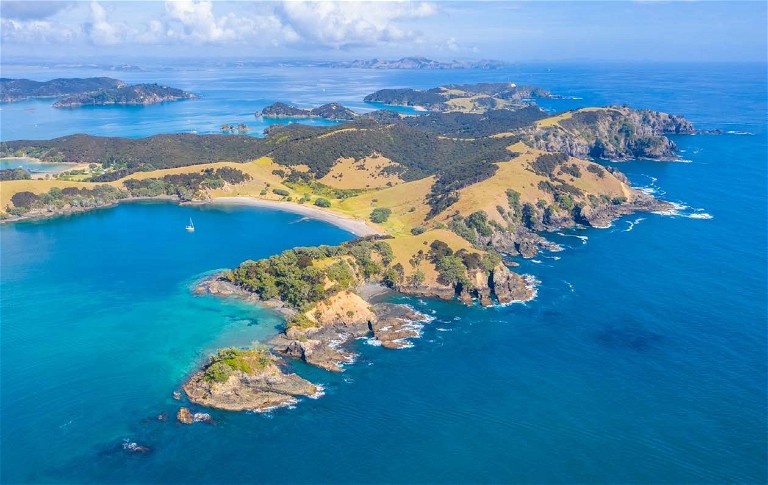
Aerial and satellite imagery has many advantages, including showing not only shorelines but also shallow reef systems, and usually – depending on the component shot – areas of kelp and weed in surprisingly deep water.
Sussing out where I might be able to catch potentially prizewinning fish is a great and fulfilling challenge, but so is changing location in any of my fishing. For me, it’s an essential part of the delight. It’s logical to me that we should do best by working out where the most and best fish are, and that at most times of year, these locations will be where the most and best food is.
The fish we want will be where there’s the most food for the least relative effort. Current, structure, food. There are variations for different species, but for this article I’m concentrating just on the three species I started off with: snapper, kahawai, trevally. It’s often said that kahawai and snapper hang out together, and trevally often seem to be around snapper, too.
When you’re drift fishing with softbaits, a current will take you to structure sooner or later. The structure aggregates food that also drifted along, and it also provides cover for predatory fish such as our three.
When you’re straylining, you need to get to the structure straight away, then position and anchor nearby, in current. Then, with your berley trail flowing, the customers come to you. The fish you want to catch are not necessarily drawn to you by the berley, but they sure are drawn to the baitfish that accumulate in a heavy berley stream.
Current means a lot in all sorts of ways. It seems that predatory fish are most active and hungry when the tide is running the strongest. That means you can try the days with the most tidal variation. It also means that halftide is good, because that’s when the flow is strongest. Look up and use the Rule of Twelfths for tide strength. It may be that moon phase theories for fish catching relate as much to tide movement as any other factor.
All the way up the food chain, in a variety of ways, structure is key. Reefs, rocks, points of land, islands and islets, and even current lines all count as ‘structure’. Structures aggregate food: algal and other weed growth, small invertebrates and vertebrates, smaller fish that feed bigger fish. Structures provide shelter from currents and predators, and shelter from which predators pounce.
So to start with, we’re looking for ideal combinations of current and structure, whether softbaiting or straylining for these species. There’s some information later in this article about fishing away from obvious structure. But for now, let’s just stay with obvious.
Waves wrap around shallow underwater structure, and peak a little or a lot depending on whether the structure is deep or shallow. You can pick reefs metres underwater from what waves are doing on the surface – even reefs as small as half a metre.
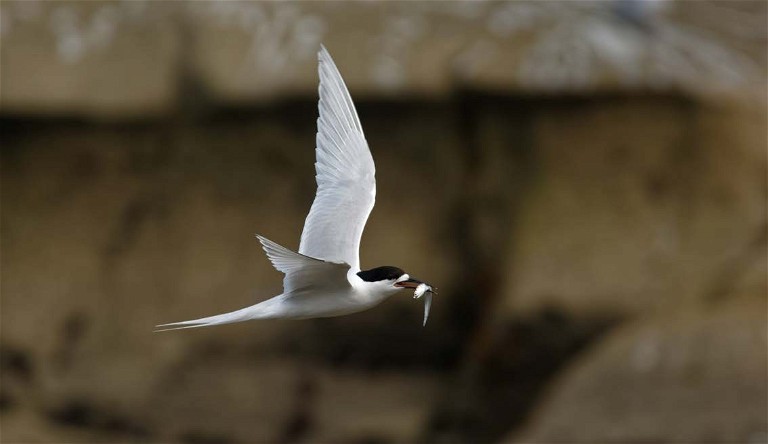
Birds that feed on living fishlife, such as terns, gannets, petrels, shearwaters, and even penguins, are PJ’s best friends.
On New Zealand’s rocky coastlines, above-water structure often continues out to sea, and often for surprising distances. Even without sonar, you can usually extrapolate shoreline features out to sea.
‘Fishing the wash’ is not necessarily taking advantage of the white water providing predatory fish opportunity or bravery. It could be more that the uneven rockery below water provides better predator stalking grounds, and hence accumulates the predators we ourselves are after.
Berley can accumulate, in both pieces and in scent, in structure a long way away from where it is dispensed. Use your own; but you can also take advantage of the berley dispenser that is a freshlaid craypot, and work out where the current may have taken its attractive smell.
Use different positioning with structure depending on what technique you’re using. For drift fishing, you want to slide on by the side of structure, so as to get your bait or lure into a place where a predator will pounce out from shelter. For straylining, you want to anchor in a place where your berley will fan out in the current from your concentrated point – your berley trail is a funnel that brings fish to you.
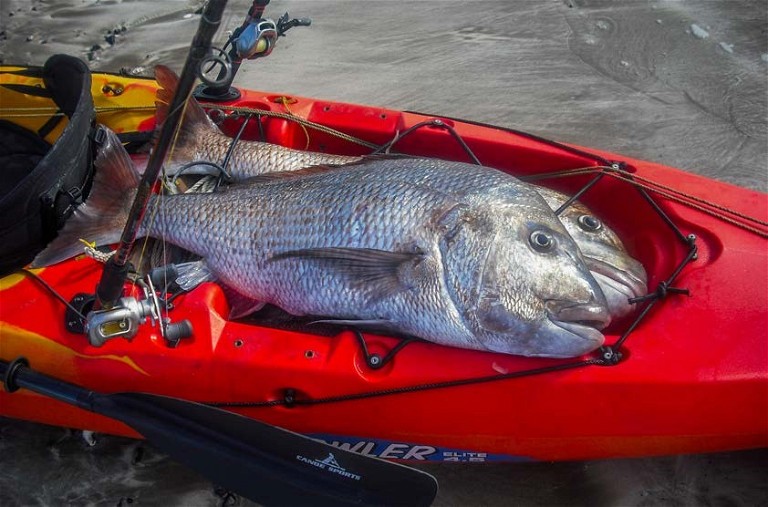
PJ enjoys the challenge of fishing from a kayak without electronics, relying on his senses to find fish.
Now here’s how to go about sussing out new territory, taking into account the characteristics of the desirable territory.
There’s a lot you can do online well before leaving home. Weather forecasts are the essential first step. High winds and the consequent choppy water are reason to postpone your expedition, though a sheltered place for landbased fishing is never out of consideration. Once you’ve worked out where you’re going to go, then check out tide times for the area, to let you work out both the state of tides in the time you’re going to be in place and also the likely direction and strength of flow.
Google Satellite view or the like is your next friend. The satellite view has a bunch of advantages, including showing not only shorelines but also shallow reef systems, and usually – depending on the component shot – areas of kelp and weed in water that’s surprisingly deep. These areas show as darker colours in the sea, usually a darker shade of green with maybe a tinge of brown.
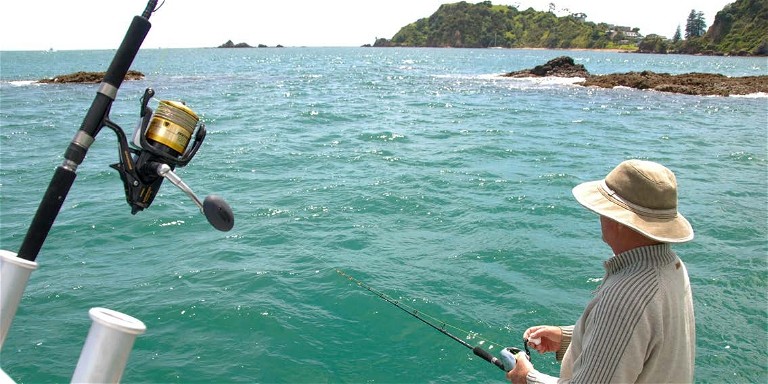
For straylining, you want to anchor in a place where your berley will fan out in the current from your concentrated point – your berley trail is a funnel that brings fish to you.
If fishing landbased off the rocks, you look for obvious structure going into fairly deep water. If you’re aiming for a sandbased session, check out beaches which will have plenty of wave action and plenty of rips, channels, and runnels. If you’re going to be fishing from a boat in shallower territory, exposed reefs will usually show with white water around them and sunken ones with the darker colour of kelp and weed.
Whether you’re aiming to fish right in close to shore or further out from a boat, accurate marine charts are freely available online. These charts show you underwater topography such as reef systems, and also tidal flow information so you can think about how to position your boat.
Moving on to what to do on the day, there are a lot more clues provided by nature. Keep your eyes open as you travel, right from the time you leave the launching ramp. You don’t need to get to some predetermined place if there’s a major workup 100 metres from where you launch.
I don’t think the seagulls tell me a lot, because it seems to me that they mainly look out for carrion. I want to see the birds that feed on living fishlife; so gannets of course, petrels, shearwaters and terns, and even penguins are my best friends. Wherever you may have planned to go, if you see seabirds working – gannets diving or sitting on the surface in groups, terns flying and diving, petrels and shearwaters scurrying and settling before moving on again, penguins in groups – get near them but not in their way, and drop a line.
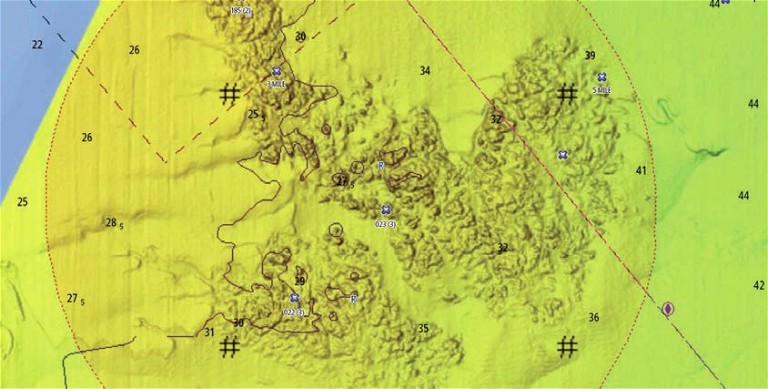
Marine charts, especially those that show detailed relief shading such as the C-MAP Reveal chart, show you underwater topography such as reef systems. Photo: Miah Dixon.
Seldom do you see a workup of baitfish being harried to the surface by predators without attendant birdlife attacking from above, but it happens. It’s more important to watch what’s going on around you than to fixate on your sounder.
Another visual giveaway, which you’ll often see for surprising lengths of time after a workup has dissipated, is the sheen of oil and little scales in and on the water. You’ll often find snapper, kahawai and curious kingfish wandering around still cleaning up the scraps.
Which brings me to smell – yes, believe it. You can smell oil and fish during and in a workup, specially where you’re close to the water and have no engine exhaust/oil to interrupt. Snapper themselves have a distinctive grassy smell that you can pick up after dolphins have been eating them.
And sound. Shoaling and schooling fish at the surface make a continuous breaking-wave sound that travels quite a way. Birds speak to each other when feeding and going for a feed, and the splosh of a gannet hitting the water is another sound you can hear from behind for quite a distance.
Returning to my introduction: I used all of the above in fishing Laurie’s contest. Sure, I did paddle my kayak further than all but one other entrant, but I caught my three species and ended up nicely in the top 5% in results.